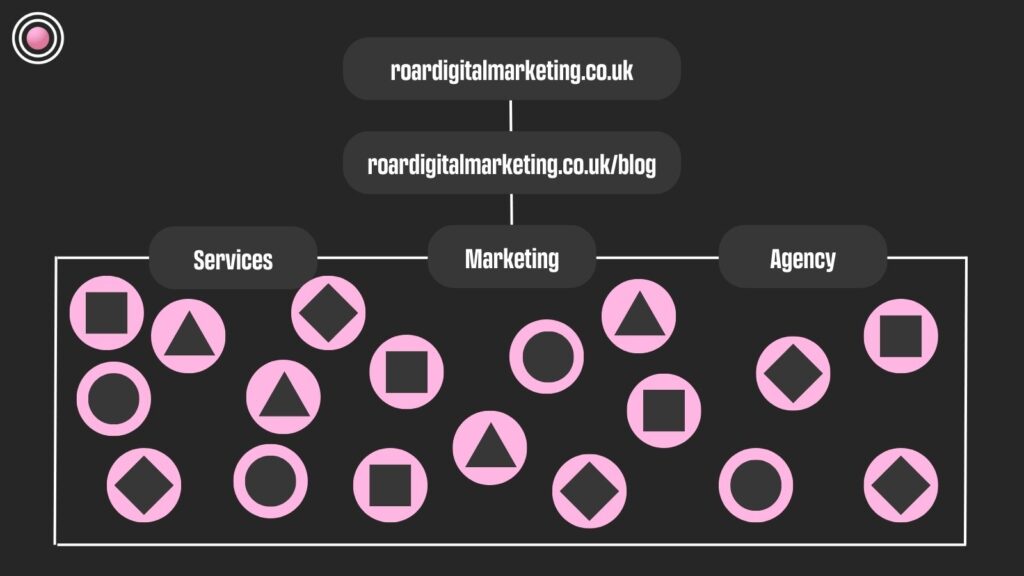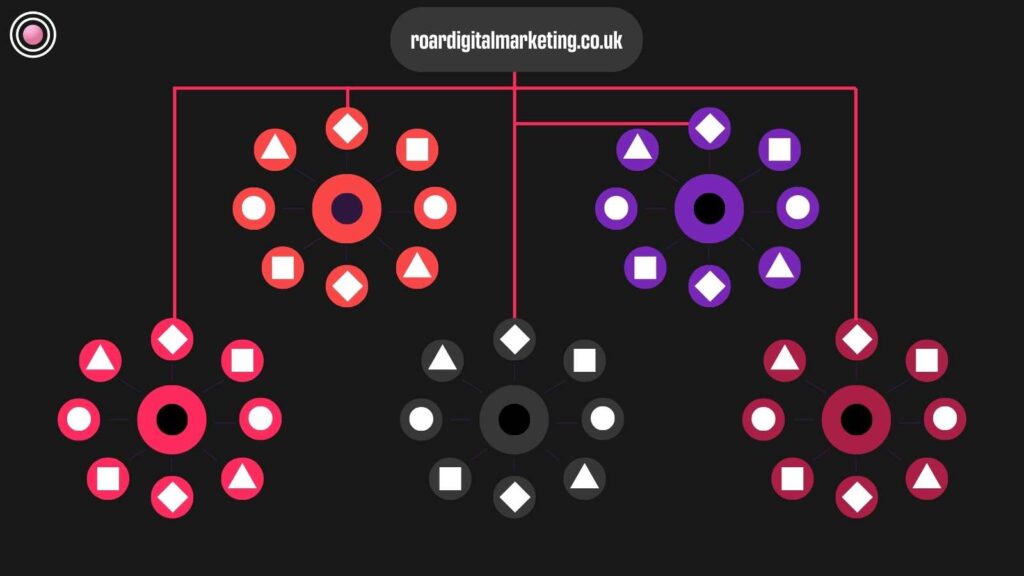
-
Cora Dixon
- 3 Min Read
- Blog, Content Creation, Digital Marketing
Why Create A Pillar and Cluster Content Strategy
Earlier this month on ROAR, we dived into How to create content clusters for SEO like a PRO, where we discussed how to begin and create your content clusters. This is our second round of blog posts around the pillar page and topic cluster content digital marketing strategy. Today, we will be discussing why it is essential to create a pillar and cluster content strategy.
Check out the video version of our ‘Creating Content Clusters’ post on our YouTube channel linked above.
Why Create A Pillar and Cluster Content Strategy
Before implementing the topic clusters technique on your website, your content and pages would resemble the image below.
There would’ve been multiple leading topics, but all of the content would’ve been floating under it.
This means it was all fighting for the same recognition from search engines to appear relevant to a user’s search.
This setup ultimately presents search engines with a much harder task of crawling your website.
Crawling is where Google or another search engine sets a bot to read your web pages. It is the first stage in having a search engine recognise your page and allow it to be found in the search results.
These pages cover similar topic areas, which means they’re competing with each other on search engine results pages. This means that they need to be organised more effectively on your site.
A pillar and content cluster strategy organises your webpages. It tells search engines which pages should be ranking for different search terms.
Topic clusters rearrange the website’s skeleton to look more like the image above.
This is where content clusters link to a pillar page on the website, which definitively covers the content.
By linking all of the internal content, search engines like Google and others can crawl through the content easily. They can read it and determine the link between content and specific keywords.
A pillar and content cluster strategy has many advantages. It can signal to search engines that your content has depth and strong internal linking. This can build up your pillar page and provide it with more authority.
The Benefits of A Pillar and Cluster Content Strategy
Still hesitant on why you should create a pillar and cluster content strategy? Here are some of the benefits:
- Improve search engine rankings – A well-thought-out content structure on your website makes it easier for search engines to crawl your site. They can then identify semantic relationships between the specific topics.
If your topic cluster page is performing well and making its way up the search rankings, the other pages will also improve. This is because you can hold multiple spaces for a keyword on the search engine results page. There is also an opportunity for search engines to put more faith in your business as a thought leader. This is because providing high-quality and accurate content improves the authority of a webpage.
- Rank widely for related terms – Search engines are much better at recognising semantically related concepts. Search algorithms are advancing and are now much better at understanding the similarities between search terms.
This means that a piece of content targeting one keyword can rank for various other related terms. Google and various search engines want to give their users trustworthy results from brands with authority.
One of the best ways to present your authority to bots or people is to create audience first, helpful and relevant content. And, ensure the focus area of these pieces is around a more prominent topic, not just one-off pieces targeting random keywords.
- Using topic clusters can be time efficient and positively affect the way your team keep on top of the content.
Using topic clusters can assist in the planning and organising of content, assuring that you post regularly. This is vital to keep your pillar page updated with relevant content.
- There is less redundancy in your content because focusing on content related to a topic decreases the potential of sharing irrelevant or pointless content.
Focussing on relevant interlinked content allows search engines to understand your site better. Whilst also providing a more tailored and positive user experience when visiting your website.
Take a look at our SEO Bomb® service. A one-of-a-kind, unique service to aid your topic cluster content and SEO strategy. Get in contact, and our team will tailor your topic clusters around your chosen pillar content for you.
If you’re still unsure about how to create content clusters, check out our post on how to create content clusters for SEO like a PRO.







